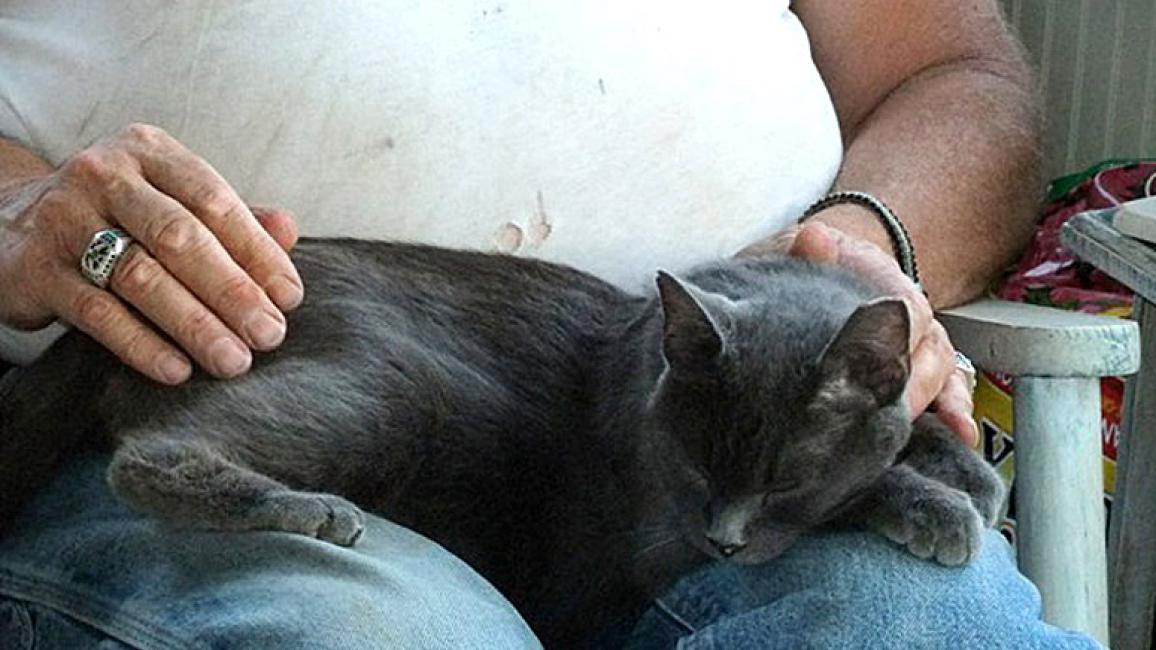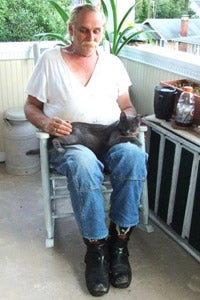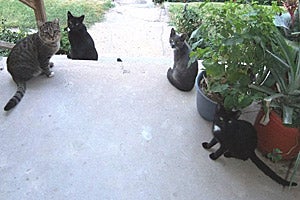Resources for cat lovers in Baltimore, Maryland

Kee-Kee is kicking back in her cat cabana. After a day filled with affectionate rubs, whimsical antics and a nosh or two, the gray grandame of the pride is purring.
"Seeing her so playful, rolling around like a kitten with her children and her grandchildren, we are just so happy to have broken a reproductive cycle that had Kee-Kee having kittens while she was still a kitten and many litters into her adulthood," says Andy Klepp-Egge Jr. "We feel like she is getting to relive her stolen youth."
 Baltimore Community Cats Project
Baltimore Community Cats Project
Kee-Kee entered Andy's life as a community (aka feral) cat, most likely an abandoned house pet who had to fend for herself from an early age. Thanks to the Baltimore Community Cats Project, a trap/neuter/return (TNR) program from Best Friends Animal Society in partnership with PetSmart Charities®, Andy and many caregivers just like him are getting the help they need. The program has Best Friends working with Baltimore Animal Rescue and Care Shelter (BARCS) and other animal welfare groups to implement a rigorous TNR endeavor.
The program also prevents community cats from being killed in the shelter system. The community cats are all returned to where they came from (unless they are sick or injured, or appear to have been abandoned). The cats are all spayed or neutered, vaccinated against rabies, ear-tipped, and treated for any illness or injury - the complete package that many people would find cost-prohibitive to provide for their cat colonies.
Andy, making ends meet on a fixed income, had Kee-Kee and her daughter spayed, spending $300 out of his own pocket. So when five hungry cats showed up at the food bowls, he wasn't sure how he would afford to care for them. Thanks to the program, he won't have to worry about that, and with his dedication to the animals, he's even helping other caregivers get their cats to their spay and neuter appointments and more.
"I hate the word 'feral,' " says Andy. "These cats aren't dangerous, disease-carrying animals. They're the result of a community that has failed them. That's why we prefer to call them community cats. My wife and I work in home assessments, and in 2008 when the housing market crashed, we saw many pets turned loose or worse. Being able to work with our neighbors - and as part of the program that is what we do - we're making a real difference in the population and their quality of life," shares Andy.
Coming together to help cats
 Andrea and Tony Shore had felt frustrated and alone. They moved to Baltimore from Harford County, where there wasn't the same level of pet abandonment problems. They love cats, and when they saw the number of them reproducing unfettered in their community, they knew right away that they wanted to start a TNR project.
Andrea and Tony Shore had felt frustrated and alone. They moved to Baltimore from Harford County, where there wasn't the same level of pet abandonment problems. They love cats, and when they saw the number of them reproducing unfettered in their community, they knew right away that they wanted to start a TNR project.
"Our goal was to get them help," says Andrea. "I was told that BARCS had a program, and I connected with Rebecca Sass-Crews from Best Friends, who has also been so responsive. She set me up with traps right away."
The Shores began canvassing the neighborhood and talking to everyone about the resources available to them for community cats, including deterrents for those who did not want cats on their property.
Andrea is particularly grateful for further bridge-building opportunities: "The program has helped us galvanize the community. I know more neighbors now because of it, and it's wonderful to all be working together towards a common goal."
Read more resources on how you can help community cats.
Photos by Andrea Shore and courtesy of Andy Klepp-Egge Jr.